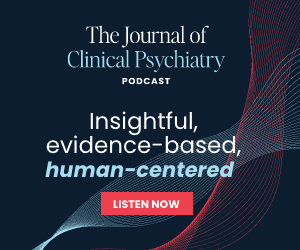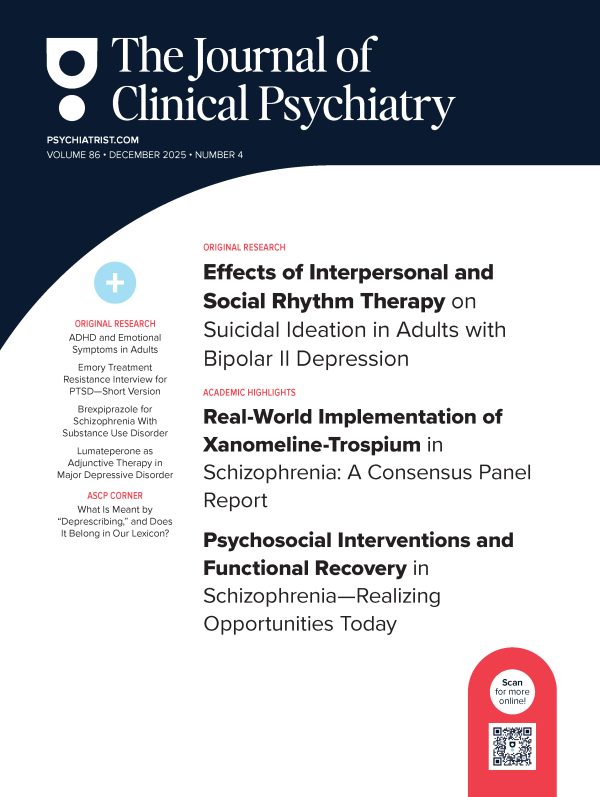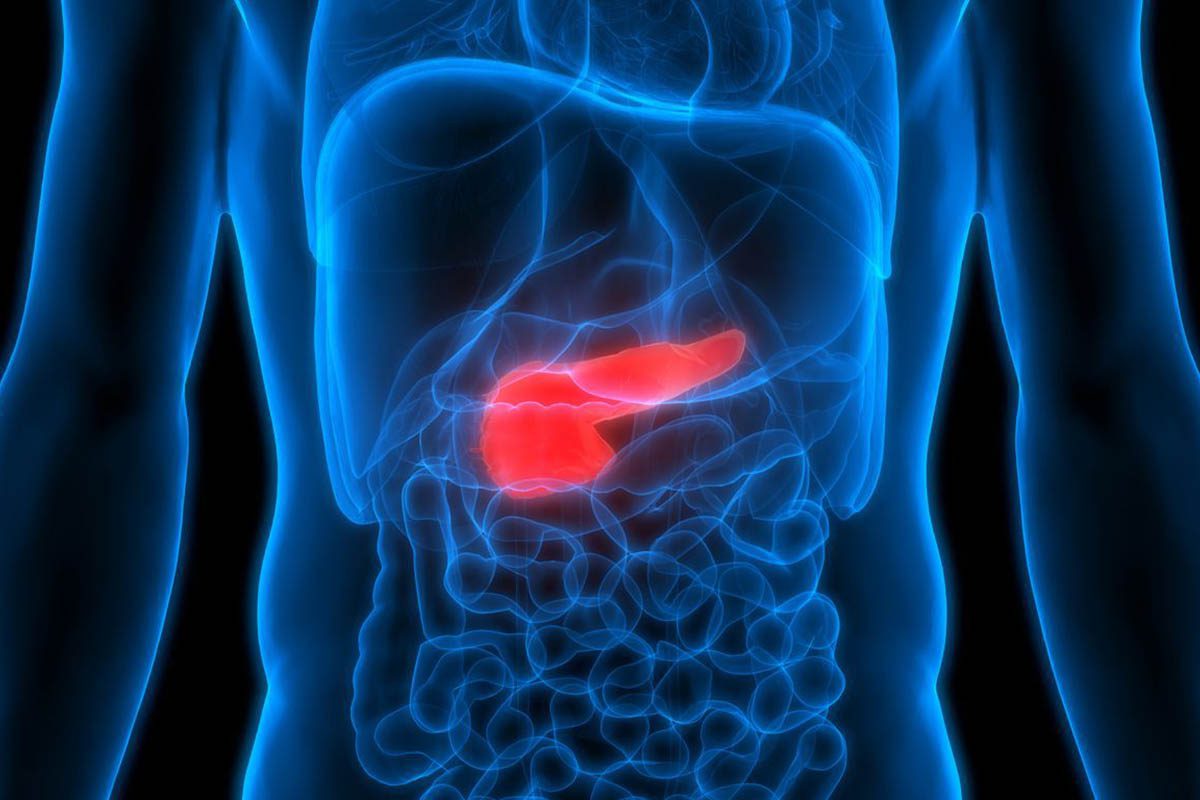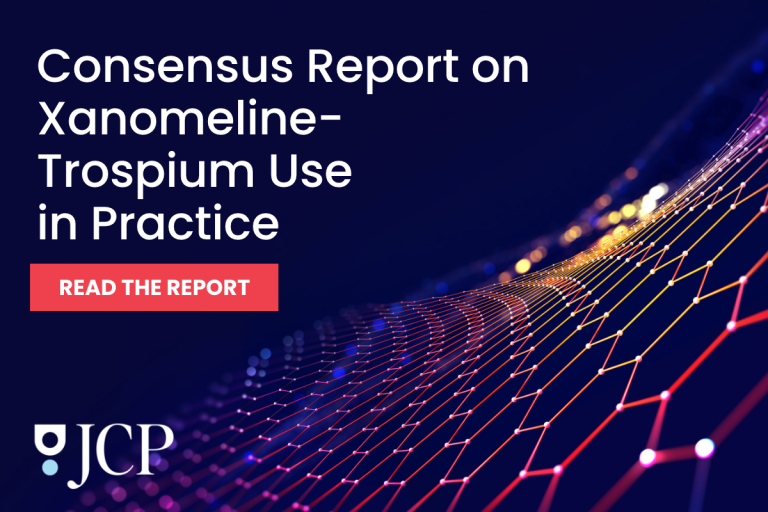Persons living with severe mental disorders are differentially affected by liver diseases of various etiologies (eg, infectious, alcohol-related).1,2 The high and increasing prevalence of obesity, type 2 diabetes mellitus (T2DM), and metabolic syndrome in persons with severe mental disorders is amply documented as is the elevated risk of cardiovascular disease and mortality.3,4 Less emphasized in the clinical characterization of cardiometabolic risk in persons with severe mental disorders is metabolic-related liver diseases.5,6 The relevance of detecting metabolic liver diseases is underscored by their contribution to advanced fibrosis, cirrhosis and hepatocellular carcinoma as well as cardiovascular disease.5 Whereas simply steatosis confers a significant mortality risk (adjusted hazard ratio 1.71), a dose-response relationship exists between the severity of metabolic diseases and all-cause mortality, notably from cirrhosis and extrahepatic cancers.5 Despite the high occurrence of metabolic liver diseases in persons with psychiatric disorders, routine screening in the psychiatric population is underrepresented in screening protocols for persons at risk for metabolic liver disease.6
Metabolic-related liver diseases are a group of pathophysiologically related conditions that are conceptualized across a spectrum of severity. Hepatic steatosis is defined as present when more than 5% of hepatocytes are steatotic in the absence of significant ongoing or recent alcohol consumption and/or other known causes of liver disease (eg, medications, infectious disease).7 Hepatic steatosis is associated with 2 major conditions notably nonalcoholic fatty liver disease (NAFLD) and alcoholic fatty liver disease (AFLD).8 NAFLD has been renamed as metabolic dysfunction–associated steatotic liver disease (MASLD).9,10
MASLD is defined as the presence of hepatic steatosis (confirmed by imaging, blood biomarkers, or biopsy) and a minimum of at least 1 cardiovascular risk factor: (1) body mass index ≥25 kg/m2 (≥23 kg/m2 in Asian) or waist circumference >94 cm in men, >80 cm in women, or ethnicity adjusted; (2) fasting serum glucose ≥100 mg/dL (≥5.6 mmol/L) or 2-hour postload glucose level ≥140 mg/dL (≥7.8 mmol/L) or HbA1c ≥ 5.7% or on specific drug treatment; (3) blood pressure ≥130/ 85 mmHg or specific drug treatment; (4) plasma triglycerides ≥150 mg/dL (≥1.70 mmol/L) or specific drug treatment; and (5) plasma HDL cholesterol <40 mg/dL (<1.0 mmol/L) for men and <50 mg/dL (<1.3 mmol/ L) for women or specific drug treatment.11 Metabolic dysfunction–associated steatohepatitis (MASH) is defined by histological findings of lobular inflammation and hepatocyte ballooning with or without fibrosis.11–13
It is estimated that ∼25% of the adult population in the US meet criteria for MASLD, with higher estimates in persons living with obesity, those with T2DM, and those meeting criteria for metabolic syndrome.7 The prevalence of MASH in the general population is estimated to be higher in persons with obesity (ie, ∼25%–30%) and persons with diabetes mellitus (ie, ∼30%–40%).7 The percentage of persons with MASLD with liver biopsy evidence of MASH is approximately 20%–60%, wherein the population-based prevalence of MASH in the US has been estimated at approximately 3%–6%.7,14 Of persons living with MASH, it is estimated that approximately 10%–25% may develop various stages of advanced fibrosis and cirrhosis.14,15 MASH is the most common reason for liver transplant among women, and it is projected to be a more common reason for liver transplant than alcohol liver disease in the general population.14
Liver fibrosis is defined as the excessive accumulation of extracellular matrix proteins and is observed in multiple types of liver diseases.16 Liver biopsy is the preferred method for the confirmatory diagnosis of liver fibrosis.17 Hepatic injury due to liver fibrosis is associated with activation of hepatic stellate cells that transition to myofibroblasts.18,19 Multiple semiquantitative staging systems have been proposed for liver fibrosis.19 For example, the METAVIR, perhaps the most common scoring system, consists of scores from F0, F1, F2, F3, and F4, which are defined as no fibrosis, portal fibrosis without septa, portal fibrosis with few septa, septal fibrosis, and cirrhosis, respectively.20,21 The purpose of fibrotic staging is to identify eligibility for therapy and to track progress in the presence of a therapeutic intervention.20
In addition to being associated with progressive hepatic impairment, the aforementioned metabolic liver diseases are also associated with change in the availability and/or function of cytochrome P450 enzyme families 1, 2, and 3 activity.22,23 For example, microsomal messenger ribonucleic acid (mRNA) levels for CYP1A2, CYP2D6, and CYP2E1 were decreased with MASLD progression.22 Furthermore, protein expression of CYP1A2, CYP2C19, CYP2D6, CYP2E1, and CYP3A4 tends to decrease with MASLD progression.22 It is estimated that approximately 75% of all drugs are biotransformed by cytochrome P450 enzymes, suggesting a potential for clinically meaningful impact on drug metabolizing enzymes which may potentially affect efficacy, tolerability, and/or safety.22
As stated earlier, the presence of metabolic liver diseases are significantly higher in persons living with severe mental disorders (eg, MASLD).23,24 Whereas it is well recognized that infectious liver diseases differentially affect the psychiatric population, the high prevalence of MASLD in persons with severe mental illnesses has been relatively less emphasized. For example, the rates of steatotic liver diseases in major depressive disorder (odds ratio [OR] =1.65), bipolar disorder (OR=1.76), and schizophrenia (OR =2.01) are posited to be as high, and possibly higher than, population-based estimates.25–29
The high rate of metabolic liver diseases in persons with severe mental illness is a consequence of aggregating risk factors in this population (eg, obesity, T2DM) as well as shared pathophysiologic mechanisms including hypothalamic–pituitary–adrenal dysregulation and alterations in the innate and adaptive inflammatory system, as well as contextual, social, and economic determinants of health.30 In addition, a large percentage of psychiatric drugs have a high propensity for clinically significant weight gain and/or metabolic disruption (eg, select antipsychotics).31
Consensus exists across national and international obesity, diabetes mellitus, and liver disease clinical practice guidelines, as well as expert opinion statements, that persons at risk for fibrotic MASLD should be routinely screened.7,32 The impetus to screen for MASLD derives not only from the morbidity associated with MASLD-related disorders, but also in recognition of the fact that less than 5% of persons with MASLD are aware of having liver disease.33 Screening recommendations for metabolic liver disease in the general population are persons who live with prediabetes, diabetes mellitus, obesity and metabolic syndrome which are overrepresented in the psychiatric population.5 In addition, polycystic ovarian syndrome (PCOS), a risk factor for fibrotic liver disease, occurs more commonly in women living with bipolar disorder when compared to the general population.7,34–37
Although multiple screening approaches exist for fibrotic liver disease, the preferred noninvasive initial test is the Fibrosis-4 (FIB-4).7 The FIB-4 is an index of hepatic fibrosis and is derived from a computation of age, plasma aminotransferases (ie, aspartate aminotransferase [AST] and alanine aminotransferase [ALT]), and platelet count. The calculation of FIB-4 is as follows: age (years) AST (U/L)/[PLT (109/L) ALT ½ (U/L).7 The FIB-4 determines whether the need exists for subsequent biopsy.
In accordance with clinical practice guidelines proposed by the European Association for the Study of the Liver, the European Association for the Study of Diabetes, and the European Association for the Study of Obesity (EASL-EASD-EASO),28 a person whose FIB-4 is less than 1.3 is assumed to be at low risk of advanced fibrotic liver disease and may be reassessed every 1–3 years. Risk of advanced fibrosis is increased in individuals with a FIB-4 greater than 1.3 (or greater than 2.0 in persons over 65 years of age).28 With respect to the care pathway for each patient, the next steps are influenced by patients’ overall history and available resources.
For persons with FIB-4 evidence suggestive of advanced fibrosis, they could be evaluated by liver elastography (ie, vibration-controlled elastrography), which measures liver stiffness and provides staging of fibrosis.28 It is recommended that liver elastography occur in persons who have FIB-4 values close to 2.67 or have high-risk conditions (eg, T2DM).27 It is also a recommendation that if FIB-4 is between 1.3 and 2.67, patients implement lifestyle change with risk factor, diet, and lifestyle modification and targeting of comorbidities for up to 1 year, followed by a reevaluation of FIB-4. If the FIB-4 remains elevated at that time, liver elastography would be recommended.28
It is recommended that all persons with severe mental disorders have weight and body mass index measured and that consideration also be given for evaluating waist circumference.31 In addition, all patients should have the FIB-4 completed, as per guidance in the general population, for persons at risk of metabolic-related liver diseases. Targeting and treating psychiatric comorbidity associated with obesity (eg, binge eating disorder, attention-deficit/hyperactivity disorder) is recommended, as is treating risk factors and comorbidities of metabolic-related liver disease (eg, T2DM).31 Selection and sequencing of psychiatric pharmacologic treatments with lower propensity to weight gain and metabolic disruption should be prioritized. As with all persons living with metabolic liver diseases, lifestyle modification, diet and nutritional counseling and pharmacologic treatment should be considered.31
The US Food and Drug Administration has approved resmetirom and semaglutide for the treatment of MASH in adults with moderate-advanced liver fibrosis.38 In addition, off-label use of other glucagon-like peptide-1 receptor agonists (GLP-1RAs) may be considered wherein preliminary evidence of efficacy is reported in metabolic liver diseases with improvements in MASH.39 Moreover, GLP-1RAs are recommended as treatment options for psychotropic drug–related weight gain and can also be considered as off-label treatments for other conditions associated with MASLD that are known to occur at a higher rate in the psychiatric population (eg, binge eating disorder, PCOS).31,40 Parenthetically, GLP-1RAs are currently in development for the treatment of several mental, neurologic and substance-use disorders.41–43 Further pharmacologic strategies to consider might include pioglitazone which may have beneficial effects on MASH as well as decrease overall liver fat.5,44–48
In summary, all persons living with severe mental illnesses, who have a high risk of metabolic liver diseases, should be routinely screened for MASLD. The screening for MASLD should be part of a comprehensive and integrated psychiatric and medical assessment of the patient that also includes evaluation of social and economic determinants of health, risk factors for cardiometabolic disorders, and measurement of anthropometrics and metabolic parameters.49
Article Information
Published Online: September 10, 2025. https://doi.org/10.4088/JCP.25com16021
© 2025 Physicians Postgraduate Press, Inc.
J Clin Psychiatry 2025;86(4):25com16021
Submitted: June 30, 2025; accepted July 3, 2025.
To Cite: McIntyre RS, Le GH. Practitioners providing care for persons with severe mental disorders should routinely screen for metabolic dysfunction–associated steatotic liver disease. J Clin Psychiatry. 2025;86(4):25com16021.
Author Affiliations: Department of Psychiatry, University of Toronto, Toronto, Ontario, Canada (McIntyre); Department of Pharmacology and Toxicology, University of Toronto, Toronto, Ontario, Canada (McIntyre); Institute of Medical Science, University of Toronto, Toronto, Ontario, Canada (Le); Poul Hansen Family Centre for Depression, University Health Network, Toronto, Ontario, Canada (Le); Brain and Cognition Discovery Foundation, Toronto, Ontario, Canada (Le).
Corresponding Author: Roger S. McIntyre, MD, FRCPC, Departments of Psychiatry and Pharmacology and Toxicology, University of Toronto, 77 Bloor St West, Ste 617, Toronto, ON, M5S 1M2, Canada ([email protected]).
Relevant Financial Relationships: Dr McIntyre has received research grant support from CIHR/GACD/ National Natural Science Foundation of China (NSFC) and the Milken Institute and speaker/consultation fees from Lundbeck, Janssen, Alkermes, Neumora Therapeutics, Boehringer Ingelheim, Sage, Biogen, Mitsubishi Tanabe, Purdue, Pfizer, Otsuka, Takeda, Neurocrine, Neurawell, Sunovion, Bausch Health, Axsome, Novo Nordisk, Kris, Sanofi, Eisai, Intra-Cellular, NewBridge Pharmaceuticals, Viatris, Abbvie, and Atai Life Sciences. Ms Le declares no competing interests.
Funding/Support: This commentary was not funded by any entity.
ORCID: Roger S. McIntyre: https://orcid.org/0000-0003-4733-2523; Gia Han Le: https://orcid.org/0000-0001-6457-0086
References (49)

- Carrier P, Debette-Gratien M, Girard M, et al. Liver illness and psychiatric patients. Hepat Mon. 2016;16(12):e41564. PubMed CrossRef
- Braude MR, Con D, Lubel J, et al. Liver disease prevalence and severity in people with serious mental illness: a cross-sectional analysis using non-invasive diagnostic tools. Hepatol Int. 2021;15(3):812–820. PubMed CrossRef
- McIntyre RS, Alsuwaidan M, Baune BT, et al. Treatment-resistant depression: definition, prevalence, detection, management, and investigational interventions. World Psychiatry. 2023;22(3):394–412. PubMed CrossRef
- McIntyre RS, Alda M, Baldessarini RJ, et al. The clinical characterization of the adult patient with bipolar disorder aimed at personalization of management. World Psychiatry. 2022;21(3):364–387. PubMed CrossRef
- Simon TG, Roelstraete B, Khalili H, et al. Mortality in biopsy-confirmed nonalcoholic fatty liver disease: results from a nationwide cohort. Gut. 2021;70(7):1375–1382. PubMed CrossRef
- Lazarus JV, Mark HE, Anstee QM, et al. Advancing the global public health agenda for NAFLD: a consensus statement. Nat Rev Gastroenterol Hepatol. 2022;19(1):60–78. PubMed CrossRef
- Cusi K, Isaacs S, Barb D, et al. American Association of Clinical Endocrinology Clinical Practice Guideline for the Diagnosis and Management of Nonalcoholic Fatty Liver Disease in Primary Care and Endocrinology Clinical Settings: Co-Sponsored by the American Association for the Study of Liver Diseases (AASLD). Endocr Pract. 2022;28(5):528–562. PubMed CrossRef
- Idilman IS, Ozdeniz I, Karcaaltincaba M. Hepatic steatosis: etiology, patterns, and quantification. Semin Ultrasound CT MR. 2016;37(6):501–510. PubMed CrossRef
- Eslam M, Sanyal AJ, George J, et al. MAFLD: a consensus-driven proposed nomenclature for Metabolic Associated Fatty Liver Disease. Gastroenterology. 2020;158(7):1999–2014.e1. PubMed CrossRef
- Eslam M, Newsome PN, Sarin SK, et al. A new definition for metabolic dysfunction-associated fatty liver disease: an international expert consensus statement. J Hepatol. 2020;73(1):202–209. PubMed CrossRef
- Chan WK, Chuah KH, Rajaram RB, et al. Metabolic dysfunction-associated steatotic liver disease (MASLD): a state-of-the-art review. J Obes Metab Syndr. 2023;32(3):197–213. PubMed CrossRef
- Singh S, Allen AM, Wang Z, et al. Fibrosis progression in nonalcoholic fatty liver vs nonalcoholic steatohepatitis: a systematic review and meta-analysis of paired-biopsy studies. Clin Gastroenterol Hepatol. 2015;13(4):643–654. PubMed CrossRef
- Chalasani N, Younossi Z, Lavine JE, et al. The diagnosis and management of nonalcoholic fatty liver disease: practice guidance from the American Association for the Study of Liver Diseases. Hepatology. 2018;67(1):328–357. PubMed CrossRef
- Sheka AC, Adeyi O, Thompson J, et al. Nonalcoholic steatohepatitis: a review. JAMA. 2020;323(12):1175–1183. PubMed CrossRef
- Lekakis V, Papatheodoridis GV. Natural history of metabolic dysfunction-associated steatotic liver disease. Eur J Intern Med. 2024;122:3–10. PubMed CrossRef
- Bataller R, Brenner DA. Liver fibrosis. J Clin Investig. 2005;115(4):1100. PubMed CrossRef
- Afdhal NH. The natural history of hepatitis C. Semin Liver Dis. 2004;24(suppl 2):3–8. PubMed CrossRef
- Friedman SL. Mechanisms of hepatic fibrogenesis. Gastroenterology. 2008;134(6):1655–1669. PubMed CrossRef
- Suk KT, Kim DJ. Staging of liver fibrosis or cirrhosis: the role of hepatic venous pressure gradient measurement. World J Hepatol. 2015;7(3):607–615. PubMed CrossRef
- Asselah T, Marcellin P, Bedossa P. Improving performance of liver biopsy in fibrosis assessment. J Hepatol. 2014;61(2):193–195. PubMed CrossRef
- BedossaP, PoynardT. Intraobserver and interobserver variations in liver biopsy interpretation in patients with chronic hepatitis C. The French METAVIR Cooperative Study Group. Hepatology. 1994;20(1):15–20. PubMed
- Fisher CD, Lickteig AJ, Augustine LM, et al. Hepatic cytochrome P450 enzyme alterations in humans with progressive stages of nonalcoholic fatty liver disease. Drug Metab Dispos. 2009;37(10):2087–2094. PubMed CrossRef
- Lake AD, Novak P, Fisher CD, et al. Analysis of global and absorption, distribution, metabolism, and elimination gene expression in the progressive stages of human nonalcoholic fatty liver disease. Drug Metab Dispos. 2011;39(10):1954–1960. PubMed CrossRef
- Thomas MD, Vittinghoff E, Crystal S, et al. Hepatitis C screening among Medicaid patients with Schizophrenia, 2002–2012. Schizophr Bull Open. 2022;3(1):sgab058. PubMed CrossRef
- Jawad MY, Meshkat S, Tabassum A, et al. The bidirectional association of nonalcoholic fatty liver disease with depression, bipolar disorder, and schizophrenia. CNS Spectr. 2023;28(5):541–560. PubMed CrossRef
- McIntyre RS, Woldeyohannes HO, Soczynska JK, et al. The rate of metabolic syndrome in euthymic Canadian individuals with bipolar I/II disorder. Adv Ther. 2010;27(11):828–836. PubMed CrossRef
- McIntyre RS, Danilewitz M, Liauw SS, et al. Bipolar disorder and metabolic syndrome: an international perspective. J Affect Disord. 2010;126(3):366–387. PubMed CrossRef
- European Association for the Study of the Liver; European Association for the Study of Diabetes; European Association for the Study of Obesity. EASL-EASD-EASO Clinical Practice Guidelines on the Management of Metabolic Dysfunction-Associated Steatotic Liver Disease (MASLD): xecutive summary. Diabetologia. 2024;67(11):2375–2392. PubMed CrossRef
- Åström H, Shang Y, Hagström H, et al. Persons with metabolic dysfunction-associated steatotic liver disease are at increased risk of severe depression. Liver Int. 2024;44(10):2551–2563. PubMed CrossRef
- Liu YK, Ling S, Lui LMW, et al. Prevalence of type 2 diabetes mellitus, impaired fasting glucose, general obesity, and abdominal obesity in patients with bipolar disorder: a systematic review and meta-analysis. J Affect Disord. 2022;300:449–461. PubMed CrossRef
- McIntyre RS, Kwan ATH, Rosenblat JD, et al. Psychotropic drug-related weight gain and its treatment. Am J Psychiatry. 2024;181(1):26–38. PubMed CrossRef
- Caussy C, Vergès B, Leleu D, et al. Screening for metabolic dysfunction-associated steatotic liver disease-related advanced fibrosis in diabetology: a prospective multicenter study. Diabetes Care. 2025;48(6):877–886. PubMed CrossRef
- Alqahtani SA, Paik JM, Biswas R, et al. Poor awareness of liver disease among adults with NAFLD in the United States. Hepatol Commun. 2021;5(11):1833–1847. PubMed CrossRef
- Kumarendran B, O’Reilly MW, Manolopoulos KN, et al. Polycystic ovary syndrome, androgen excess, and the risk of nonalcoholic fatty liver disease in women: a longitudinal study based on a United Kingdom primary care database. PLoS Med. 2018;15(3):e1002542. PubMed CrossRef
- Wong S, Le GH, Lo HKY, et al. Suicide risk in persons with polycystic ovarian syndrome: a systematic review. Ann Gen Psychiatry. 2025;24(1):38. PubMed CrossRef
- McIntyre RS, Mancini DA, McCann S, et al. Valproate, bipolar disorder and polycystic ovarian syndrome. Bipolar Disord. 2003;5(1):28–35. PubMed CrossRef
- Liu J, Teng Z, Xie H, et al. Prevalence and characteristics of polycystic ovarian syndrome in patients with bipolar disorder. J Affect Disord. 2023;340:387–395. PubMed CrossRef
- Keam SJ. Resmetirom: first approval. Drugs. 2024;84(6):729–735. PubMed CrossRef
- Potter KJ, Phinney J, Kulai T, et al. Effects of GLP-1 receptor agonist therapy on resolution of steatohepatitis in non-alcoholic fatty liver disease: a systematic review and meta-analysis. J Can Assoc Gastroenterol. 2025;8(2):47–57. PubMed CrossRef
- Himmerich H, Bentley J, McElroy SL. Pharmacological treatment of binge eating disorder and frequent comorbid diseases. CNS Drugs. 2024;38(9):697–718. PubMed CrossRef
- Zheng YJ, Soegiharto C, Au HCT, et al. A systematic review on the role of glucagon-like peptide-1 receptor agonists on alcohol-related behaviors: potential therapeutic strategy for alcohol use disorder. Acta Neuropsychiatr. 2025;37:e51. PubMed CrossRef
- McIntyre RS, Rasgon N, Goldberg J, et al. The effect of glucagon-like peptide-1 and glucose dependent insulinotropic polypeptide receptor agonists on neurogenesis, differentiation, and plasticity (Neuro-GDP): potential mechanistically informed therapeutics in the treatment and prevention of mental disorders. CNS Spectr. 2025;30(1):e23. PubMed CrossRef
- Au HCT, Lam PH, Lim PK, et al. Role of glucagon-like peptide-1 on amyloid, tau, and α-Synuclein: target engagement and rationale for the development in neurodegenerative disorders. Neurosci Biobehav Rev. 2025;173:106159. PubMed CrossRef
- Cusi K, Orsak B, Bril F, et al. Long-Term pioglitazone treatment for patients with Nonalcoholic steatohepatitis and prediabetes or type 2 diabetes mellitus: a randomized trial. Ann Intern Med. 2016;165(5):305–315. PubMed CrossRef
- Sanyal AJ, Chalasani N, Kowdley KV, et al. Pioglitazone, Vitamin E, or placebo for nonalcoholic steatohepatitis. N Engl J Med. 2010;362:1675–1685. PubMed CrossRef
- Belfort R, Harrison SA, Brown K, et al. A placebo-controlled trial of pioglitazone in subjects with nonalcoholic steatohepatitis. N Engl J Med. 2006;355:2297–2307. PubMed CrossRef
- Aithal GP, Thomas JA, Kaye PV, et al. Randomized, placebo-controlled trial of pioglitazone in nondiabetic subjects with nonalcoholic steatohepatitis. Gastroenterology. 2008;135(4):1176–1184. PubMed CrossRef
- Bril F, Biernacki DM, Kalavalapalli S, et al. Role of vitamin E for nonalcoholic steatohepatitis in patients with type 2 diabetes: a randomized controlled trial. Diabetes Care. 2019;42(8):1481–1488. PubMed CrossRef
- McIntyre RS, Berk M, Brietzke E, et al. Bipolar disorders. Lancet. 2020;396(10265):1841–1856. PubMed CrossRef
This PDF is free for all visitors!





